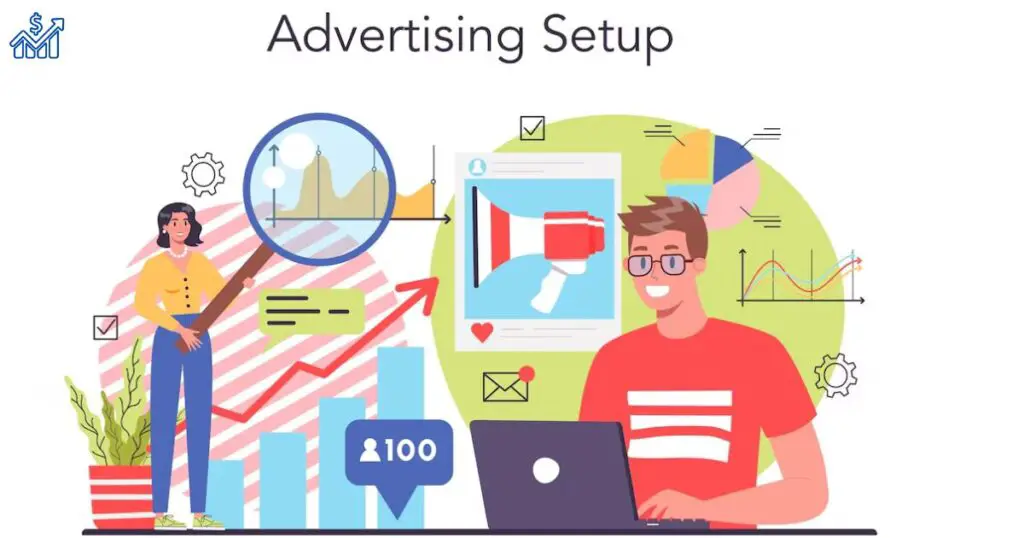Table of Contents
A brief overview of Google Ads and its importance for beginners.
Google Ads for Beginners
It allows businesses to display ads on Google search results pages, websites, YouTube, and other platforms, targeting users based on their search queries and browsing behavior.
Gaining a grasp of Google AdWords is crucial for novices since it offers a chance to boost brand awareness, improve website traffic, and produce leads or purchases.
Using Google AdWords gives newcomers an advantage in the cutthroat online industry by providing access to powerful digital marketing tactics.
Understanding Google Ads

Explanation of what Google Ads is and its key features.
Enables display.
Its key features include precise targeting options based on keywords, demographics, and interests, customizable ad formats such as text, image, and video ads, as well as flexible budget and bidding strategies.
Google Ads also offers detailed analytics and reporting tools to track campaign performance and effectively optimize ad strategies.
Overview of the different types of Google Ads campaigns (Search, Display, Video, Shopping, etc.).
Understanding the different types of Google Ads campaigns is crucial for beginners diving into digital advertising.
These include search campaigns, which are ideal for targeting users actively searching for specific keywords.
Display campaigns, which show ads across a wide network of websites and apps.
Video campaigns, designed to engage video content on YouTube and partner sites. and shopping campaigns designed to promote products with rich visuals and detailed information.
Each type of campaign offers unique opportunities to effectively reach and engage target audiences.
Setting Up Your Google Ads Account

Step-by-step guide on creating a Google Ads account.
Creating a Google Ads account is critical to online advertising success.
In this step-by-step guide, we’ll walk you through the process with ease.
Get started by visiting the Google Ads website and clicking “Get Started Now.”
Next, you’ll be asked to sign in with your Google account or create a new one.
Then, follow the prompts to enter basic information about your business and set your billing preferences.
Finally, verify your account and start leveraging the power of Google Ads to effectively reach your target audience.
Tips for setting up billing information and campaign settings.
When setting up your Google Ads account, ensuring accurate billing information and campaign settings are crucial for smooth operations.
Start by entering accurate billing details to avoid ad delivery interruptions.
Choosing the right campaign settings, such as location targeting and ad scheduling, improves ad performance.
It is recommended to regularly review and adjust the settings to align with campaign objectives.
By carefully configuring billing information and campaign settings, beginners can lay a solid foundation for effective Google Ads management and maximize their advertising ROI.
Keyword Research

Importance of keyword research in Google Ads.
Keyword research in Google Ads is critical to targeting the right audience and maximizing ad performance.
This research informs ad copy, bidding strategies, and campaign targeting, which ultimately leads to higher click-through rates (CTRs) and conversions.
Understanding user intent through keyword research enables advertisers to tailor their messaging more effectively, increasing the overall relevance and success of their Google Ads campaigns.
Techniques for identifying relevant keywords for your campaigns.
In the realm of Google Ads, identifying the right keywords is paramount to campaign success.
Employing techniques such as comprehensive market research, competitive analysis, and leveraging keyword research tools are important.
Additionally, including long-tail keywords and negative keywords improves campaign targeting.
Developing a strong keyword strategy ensures that your ads reach the right audience, increasing click-through rate (CTR) and maximizing return on investment (ROI).
Creating Compelling Ads

Tips for crafting engaging ad copy.
Creating engaging ad copy is essential to capture audience attention and increase conversions.
Start by understanding your target audience’s needs and pain points, then tailor your messaging to resonate with them.
Use persuasive language, clear calls to action, and highlight unique selling points to entice clicks.
Adding emotional triggers and storytelling can also make your ads more compelling.
Constantly test and improve your ad copy based on performance data for maximum effectiveness.
Remember, great ad copy can significantly impact the success of your Google Ads.
Best practices for creating effective ad headlines and descriptions.
Crafting effective ad headlines and descriptions is critical to capturing audience attention and getting clicks.
Start with a strong headline that grabs attention and conveys your value proposition.
A/B tests different variations to identify top-performing messaging.
Focus on creating a sense of urgency or exclusivity to encourage immediate action from potential customers.
Understanding Ad Extensions

Explanation of ad extensions and their benefits.
They offer benefits such as increased click-through rates, better ad relevance, and better user experience.
Ad extensions can include site links, callouts, structured snippets, location information, and more, helping users make informed decisions and encouraging interaction with your ads.
By using ad extensions effectively, advertisers can increase ad performance, drive more qualified traffic, and ultimately achieve better campaign results.
How to set up and optimize ad extensions for better performance.
They offer benefits such as increased click-through rates, better ad relevance, and better user experience.
Ad extensions can include site links, callouts, structured snippets, location information, and more, helping users make informed decisions and encouraging interaction with your ads.
By using ad extensions effectively, advertisers can increase ad performance, drive more qualified traffic, and ultimately achieve better campaign results.
Budgeting and Bidding Strategies

Overview of budgeting options in Google Ads.
Understanding the budget options in Google Ads is critical to effective campaign management.
Google offers different budget strategies to suit different advertising goals.
Advertisers can choose from daily budgets, which ensure consistent spending throughout the day, or campaign-level budgets for greater control over overall spending.
Additionally, Google provides options such as bid strategies and automated bidding, allowing advertisers to optimize spend based on performance metrics.
By strategically leveraging these budgeting options, advertisers can maximize their ad spend and achieve better results.
Introduction to different bidding strategies and when to use them.
Understanding the different bidding strategies is important in optimizing Google Ads campaigns.
Common strategies include cost per click (CPC), cost per thousand impressions (CPM), and cost per acquisition (CPA).
CPC is ideal for driving website traffic, while CPM suits brand awareness goals. CPA, on the other hand, focuses on getting leads or conversions.
Choosing the right strategy depends on the campaign objectives, budget, and target audience.
Mastering these strategies empowers advertisers to maximize their ad spend and get the best results from their Google Ads campaigns.
Tracking and Measuring Performance

Importance of tracking metrics in Google Ads.
Tracking metrics in Google Ads is important for evaluating campaign performance and optimizing strategies.
The metrics provide valuable insight into the effectiveness of ads, keywords, and targeting methods.
Can make data-driven decisions for Regular tracking enabling timely adjustments, ensuring campaigns stay aligned with goals and deliver the best possible results in a competitive digital advertising landscape.
Overview of key performance indicators (KPIs) and how to measure them.
Understanding key performance indicators (KPIs) is important in evaluating the effectiveness of Google Ads campaigns.
Tracking these metrics allows advertisers to evaluate the success of their efforts and make data-driven decisions.
Using tools like Google Analytics and Google Ads reporting features enable marketers to accurately measure KPIs, providing valuable insights to optimize campaigns and maximize return on investment (ROI).
Optimization Techniques

Strategies for optimizing campaigns for better performance.
Optimizing campaigns is crucial to increasing performance in Google Ads.
Adjust bidding strategies to effectively allocate budget and capitalize on profitable opportunities.
Use ad extensions to provide additional information and improve ad visibility.
Regularly analyze campaign data to identify areas of underperformance and make data-driven adjustments.
Experiment with ad creatives and landing pages to increase user engagement and conversion rates.
Continuous optimization efforts ensure that campaigns remain competitive and achieve optimal results.
Tips for A/B testing ad variations and adjusting campaigns based on results.
A/B testing ad variations is critical to optimizing Google Ads campaigns.
Start by testing different elements such as headlines, descriptions, and visuals to identify what works best for your audience.
Analyze metrics such as click-through rate (CTR) and conversion rates to determine the most effective variations.
Constantly adjust your campaigns based on these results to maximize performance.
Remember to implement incremental changes and track the impact to ensure continuous improvement in your advertising efforts.
Adapting Strategies for Success

Ways to adapt Google Ads strategies based on performance and market trends.
Adopting Google Ads strategies is crucial for continued success.
Additionally, being aware of market trends and competitors’ strategies allows for timely adjustments in ad targeting and messaging.
Regularly updating ad creatives, adjusting bidding strategies, and experimenting with new features ensure campaigns remain relevant and effective.
By constantly adapting strategies based on performance and market dynamics, advertisers can maximize their ROI and stay ahead of the competition.
Continuous learning and improvement mindset for long-term success.
This approach includes keeping up with industry trends, algorithm updates, and emerging technologies.
By constantly refining strategies, experimenting with new techniques, and analyzing performance metrics, businesses can change consumer attitudes and market dynamics.
Through ongoing learning and optimization efforts, marketers can maintain a competitive edge, drive sustainable growth, and achieve sustainable success in the ever-changing online advertising landscape.
Conclusion
Recap of key points discussed.
We emphasized the importance of understanding the platform, doing thorough keyword research, and creating great ads.
Additionally, we highlighted the importance of tracking performance metrics for budgeting, bidding strategies, and optimization.
Strategies must be continuously adapted based on performance and market trends.
By implementing these top tips, beginners can begin their Google Ads journey with confidence and maximize their chances of success.
Encouragement for beginners to start their Google Ads journey with confidence.
For those starting their Google Ads journey, trust is key.
While this platform may seem daunting at first, remember that every successful advertiser starts with the basics.
Embrace the learning process and trust your ability to grasp the basics.
With dedication and persistence, you’ll soon be navigating Google Ads with ease.
Take each step with confidence, knowing that each iteration of the campaign brings valuable insights.
Remember, the journey to mastering Google Ads begins with that first confident step.

